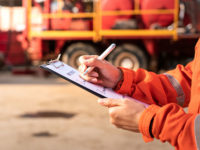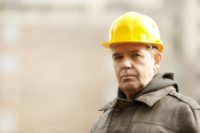The pandemic’s unintended consequences: EHS pros build skills, clout & confidence

EHS professionals have gotten the word for years in books, articles, conferences, webinars, podcasts and social media platforms. Build up your people skills and professional networks. Go out of your way to make contacts. Get exposure. Collaborate more. This is how the profession gains visibility and credibility.
Pros have been schooled in technical knowledge, and regularly apply their technical expertise to comply with regulations and engineer out hazards and risk. But to raise the profile and clout of the profession with senior managers, the public and the media pros must push beyond their techy, compliance-oriented image. Call it the law of unintended consequences: the pandemic — which pros will tell you is still ongoing — has challenged EHS pros to use their people skills perhaps like never before, reaching out, working together, and getting unprecedented national exposure.
To be sure, not all professionals have a positive reaction to the pandemic’s impact. “I do not hold a high opinion that safety gained positives through COVID,” says one pro. “I feel like we lost creditability. On the west coast we got turned into mask cops outdoors instead of PPE cops.”
“I lost my job after the protocols were lifted,” says another. “I was a film and TV studio production COVID coordinator. They didn’t need me.”
On the ground
The pandemic has been a horrifying global tragedy. And an emotional tsunami. Professionals have confronted anger: “Why do I have to come to work?” Strident opinion: “I don’t a need a vaccine.” The fear factor: “Are we all going get it? The news is terrible.” Personal upheaval: “I have a newborn at home. I’m scared.” Personal challenge: “Why should I believe you?” Uncertainty: “Here’s what we know right now. That may change as more research becomes available.”
“If I have a disagreement regarding lockout-tagout, I can get people to come around. The pandemic is more intense and emotional than what color locks you need,” says Sarah Bogner, manager of health and safety at the Contra Costa (CA) Water District.
“My challenge has been supporting the frontline associates’ physical and emotional well-being. This requires active listening, actively caring, and a level of trust I built up prior to COVID,” says Julian Mercer, director of safety & ESG at FTC Solar. “I was taking temperature checks at 6 am, on multiple shifts, checking everyone. I was at a manufacturing facility early on, and we never shut down.”
Deb Roy’s people skills came into play not with frontline employees, but reporters. Roy, the president of SafeTech Consultants, Inc., gained widespread national media exposures as the American Society of Safety Professionals’ primary interview source, due to her public health degree, occupational health nursing experience, and being the president-elect and then president of ASSP during the early pandemic years. “I developed a good rapport with reporters and they kept calling,” she says. “We were kind of shocked in the beginning.”
Roy says the barrage of interview requests was unprecedented for ASSP. Requests were also coming into AIHA, to explain the role of the industrial hygienist in the pandemic, and ASHRAE, to explain HVAC system operation and ventilation, filtration and air cleaning. In some cases, the media became aware of the critical role EHS pros were playing before an organization’s senior management did.
“Now people get it. Now more pros have a seat at the table,” says Mercer. ”Really, EHS pros do this all the time – emergency response, crisis management, business continuity. This has been my role for a very long time, and my management just expected me to continue doing what I do.”
“Wild times”
Still, he calls the early days of the pandemic “tumultuous. It was draining.” Long hours on the job became longer. Rumors, misinformation or no information were problematic. “We were all questioned by our families,” says Mercer. “We were safer at work than at home.”
“They were wild times,” says Bogner. “We were asked to make policy decisions based on no information, no best practices, no standards. Who should go home? Who should stay? I had to keep people working side by side in a ditch. I leaned on other safety pros; we developed a cohort of peers to turn, to figure out what to do. Once guidance was released it got easier; I was reading every science paper, every news article, emailing pros like crazy. Where did you buy your masks? We let each other know about new guidance. Sharing with other pros was super helpful because it is so easy to miss stuff.”
“Build up that bench strength,” says Mercer. “The pandemic has allowed me to carry the message to others about the importance of continuing education, professional development and volunteering.”
New perceptions
The pandemic has changed public perceptions of EHS work. It’s opened eyes in management suites and loosened purse strings for new initiatives, like one pro’s incident reporting system that he might not have been able to launch pre-pandemic. And the media has a much deeper understanding of the role professionals play. But one of the strongest marks left by the pandemic is how professionals look at themselves.
“It’s changed me as a safety and health professional,” says Roy. “I started as an occupational health nurse and spent most of my career as a safety professional. I saw other people in the safety field as more technical than me. But I have a science background and I’ve done the same work, including high hazard chemical work. The pandemic gave me a different view of myself.”
“It actually gave me a lot of confidence,” says Bogner. “A lot of emotions were focused on me; it was hard to depersonalize. In safety you want to try to get people on board. There were times during the early days of the pandemic when I couldn’t please everyone. Some staff badly wanted vaccines. Others were horrified by a mandated medical treatment. They saw it as infringing on their freedom.
“It was tremendously time-consuming. Contact tracing. Employee notifications. Setting health policy. Disinfection and cleaning. Fielding questions. I had to do a lot of listening and reassuring, playing the therapist role to help staff get emotionally through this time.
It was definitely trial by fire. How I deal with people definitely improved. I realized it is a strength I have.”
Positive reinforcement
Pros realized one more resource coming through the trial by fire: their commitment to the cause. “It reinforced that I am in the right profession – not that there was any doubt,” says Mercer. “It reinforced the value of being connected to your workers before there’s a crisis. And it reinforced the value I have of being a bridge, closing gaps and providing answers when people don’t know where to go. People come to safety pros sometimes to talk about things that have nothing to do with safety.”
“For sure it’s the people part that I really like about safety, and I realize now I want the people part to be big part of anything I do in the future,” says Bogner. “I like the hands-on work, seeing people face to face. No matter where my career goes, I want that.”
“I’ve learned through this process my background brought more to the table in this situation,” says Roy. “I realized how beneficial my health background is to my clients and to ASSP. I minimized this before; it really changed how I see myself. I’ve broadened my focus.”
This article originally appeared in the fall 2022 newsletter of the Phylmar Group www.phylmar.com
Looking for a reprint of this article?
From high-res PDFs to custom plaques, order your copy today!









